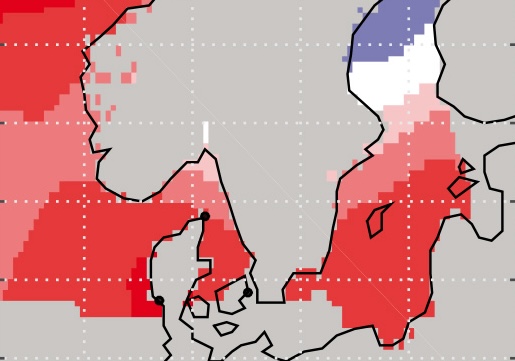
How to Cite
Share
Abstract
Between 1850 and 2006 global mean sea level rose by 24 ± 18 cm. It is projected to rise a further 52 ± 21 cm under the Representative Concentration Pathway (RCP) 4.5 scenario, which approximates the carbon emissions reductions of the ‘Paris Agreement’ climate pathway. It is projected to rise 74 ± 28 cm under the RCP8.5 scenario, which represents a ‘business-as-usual’ climate pathway (Box & Colgan 2017). These rates of recent and future sea-level rise are faster than those reconstructed for previous warm intervals, such as the Medieval Climatic Optimum (c. 1000 to 1400 CE) and the Holocene Thermal Maximum (c. 7000 to 3000 BCE) (Gehrels & Shennan 2015). Moreover, palaeo reconstructions indicate a global sea-level sensitivity of two metres per degree of warming (Levermann et al. 2013).
The forces driving global sea-level change are complex. The global sea-level budget includes the transfer of land ice into the ocean, thermal expansion of seawater, changes in land water storage, and changes in ocean basin volume (Church et al. 2013). At the local scale, the evolving planetary gravity due to shifting water and ice masses, shifting oceanic and atmospheric currents and persistent tectonic and glacial isostatic adjustment processes can also be important. Sea-level changes around the globe are therefore far from uniform (Jevrejeva et al. 2016).
Here, we highlight the value of combining palaeo reconstructions of sea level, the measured tide gauge record, and projections of future sea level. This allows us to understand local sea-level changes from the recent past in the context of global projections for the near future (0 to 2100 CE). We explore the strong differences in local sea-level histories and future projections at three Danish cities: Skagen and Esbjerg, as they have contrasting glacio-isostatic adjustment histories, and Copenhagen, where we also compare local and global drivers of present-day sea-level rise based on previously published research.










